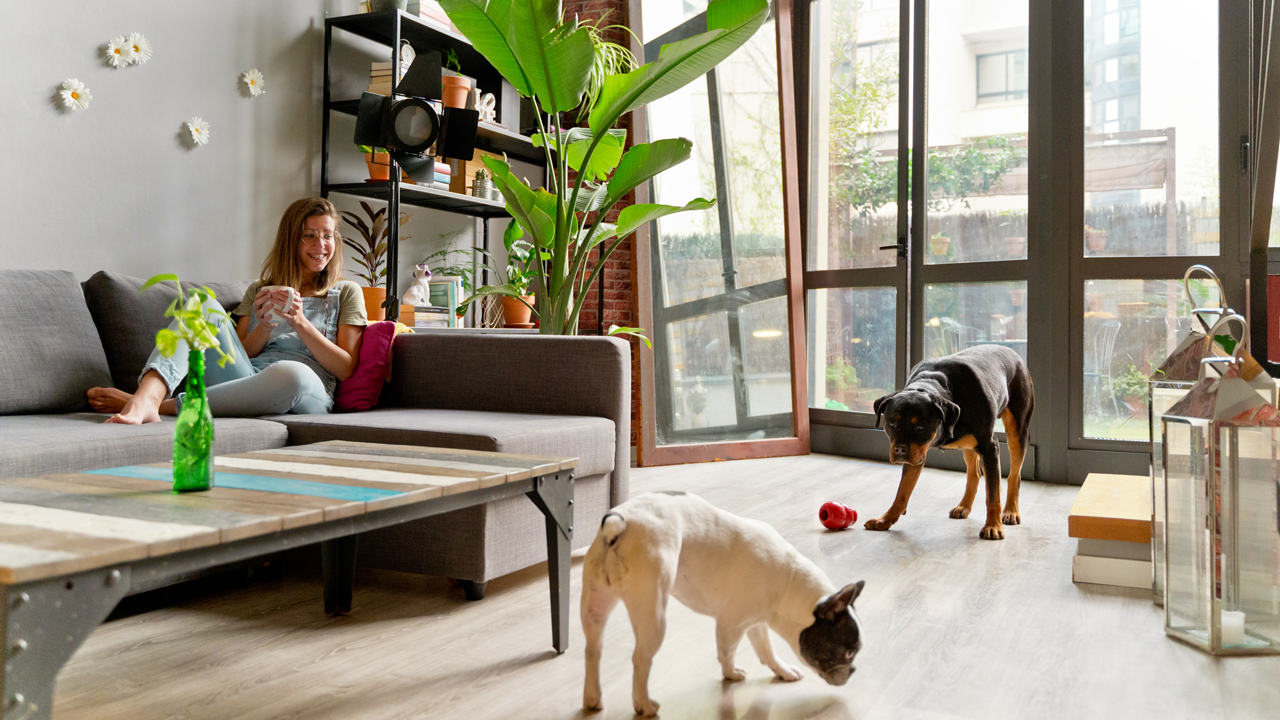Insights > Do's and don'ts: Pet-proofing your home
Do's and don'ts: Pet-proofing your home
09/18/2024

Recently adopted puppies and kittens will explore every nook and cranny of your house as they learn the lay of the land. While they discover their favorite nap time spots, they'll run into some unexpected hazards that could lead to a trip to the vet. Protect them from harm by creating a safe environment before they step through the door for the first time.
Do:
Lock up toxic substances
Medication, cleaners and other chemicals could be lethal to your pet. A curious cat, dog or rabbit could easily ingest a pill or tablet if medication is left uncapped. Safely secure dangerous substances in cabinets and lock them with child-proof latches. Household cleaners, even if locked up, could poison your pet if they lick their paws after stepping on a recently cleaned surface. Check your products for ingredients that could be harmful to your pet and consider alternatives.
Secure electrical wires
Lamps, DVD players, TVs and speakers in your living room may be out of reach for your pet, but their power cords look like a tasty snack. Pets love to chew on loose cords and wires, which ruins the cord and could result in burns or electrocution for your furry friends. Attach cords to nearby furniture or walls with wire ties and adhesive strips. If securing them isn't enough, invest in cord protectors that wrap around existing wires or upgrade to chew-proof cords for phone chargers.
Cover heating and air vents
Home heating and cooling introduces numerous risks for small pets, especially. Animals often crawl into small spaces, and they could enter and get trapped in vents. Restrict pet access by adding covers to all vent entry and exit points in your home and screwing registers into the floor. Enhance protective covers on baseboard heating units so pets can't get burned by the hot surfaces.
Don't:
Fill your home with plants
Adding more green to your space is a great idea — if you don't have curious pets. Some ferns, ivy and other common household plants contain toxins that shouldn't be ingested by animals. Place dangerous plants on tall, hard-to-reach surfaces or — better yet — rid your home of any toxic greenery to ensure your pets won't as much as nibble on a leaf that could be harmful to their health.
Leave appliance doors open
Ovens, fireplaces and other appliances could be cozy hiding spots for pets if the doors are left open or covers are left off. Some cats enjoy naps in the dryer, so always check for your pet before doing another load of laundry. Leaving the fridge open while you chop veggies doesn't seem like that big of a deal, but certain foods are dangerous to your pet. To stop your curious pooch or nosy feline from nabbing an onion or avocado, remember to shut the refrigerator door.
Give new pets full access to the house
Some things can't be hidden or locked up, and puppies will be curious to explore stairs and see how much human food they can sneak during dinner time. Stop dogs from entering potentially hazardous areas with baby gates. Make sure the bars are the perfect distance apart, so your pets can't slip through or get their heads stuck. And if your dog tends to jump or climb, opt for a taller gate.
A few precautions could be the difference between a healthy pet and a trip to the vet. Make your home their home, too.
To stay safe around electricity, check out more information on our residential safety site.
